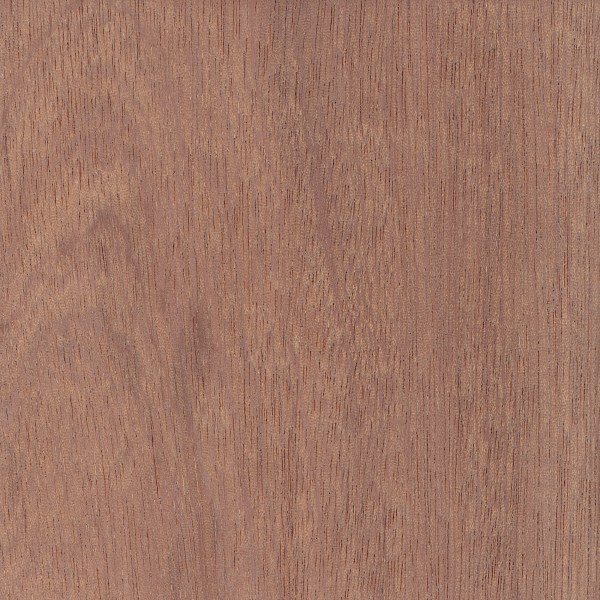Sapele
Color/Appearance: Heartwood is a medium to dark reddish brown or purplish brown. Color tends to darken with age. Besides the common ribbon pattern seen on quartersawn boards, Sapele is also known for a wide variety of other figured grain patterns, such as: pommele, quilted, mottled, wavy, beeswing, and fiddleback.
Grain/Texture: Grain is interlocked, and sometimes wavy. Fine uniform texture and good natural luster.
Endgrain: Diffuse-porous; large pores in no specific arrangement, few; solitary and radial multiples of 2-3; reddish brown deposits occasionally present; growth rings distinct due to terminal parenchyma; rays not visible without lens; apotracheal parenchyma diffuse-in-aggrregates, paratracheal parenchyma vasicentric, aliform (winged), confluent, and banded.
Rot Resistance: Heartwood ranges from moderately durable to very durable in regard to decay resistance. Sapele is susceptible to insect attack.
Workability: Sapele can be troublesome to work in some machining operations, (i.e., planing, routing, etc.), resulting in tearout due to its interlocked grain. It will also react when put into direct contact with iron, becoming discolored and stained. Sapele has a slight blunting effect on cutters, but it turns, glues, and finishes well.
Odor: Sapele has a distinct, cedar-like scent while being worked.
Sustainability: This wood species is not listed in the CITES Appendices, but is on the IUCN Red List. It is listed as vulnerable due to a population reduction of over 20% in the past three generations, caused by a decline in its natural range, and exploitation.
Common Uses: Veneer, plywood, furniture, cabinetry, flooring, boatbuilding, musical instruments, turned objects, and other small wooden specialty items.
Comments: Sapele is a commonly exported and economically important African wood species. It’s sold both in lumber and veneer form. It is occasionally used as a substitute for Genuine Mahogany, and is sometimes referred to as “Sapele Mahogany.” Technically, the two genera that are commonly associated with mahogany are Swietenia and Khaya, while Sapele is in the Entandrophragma genus, but all three are included in the broader Meliaceae family, so comparisons to true mahogany may not be too far fetched.



